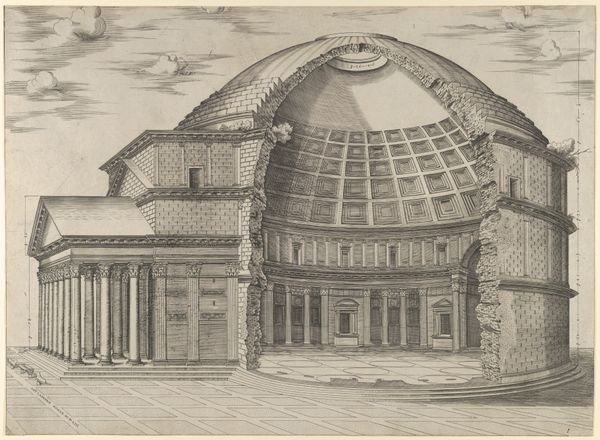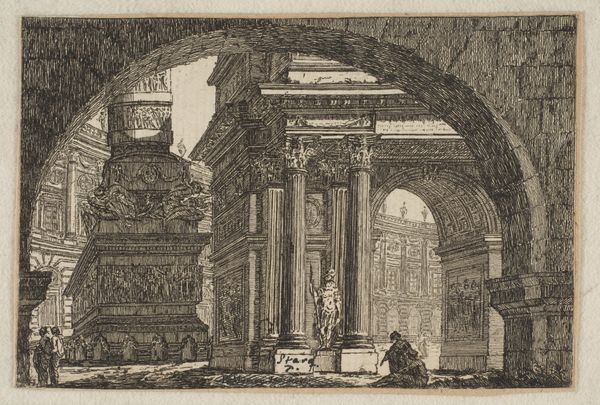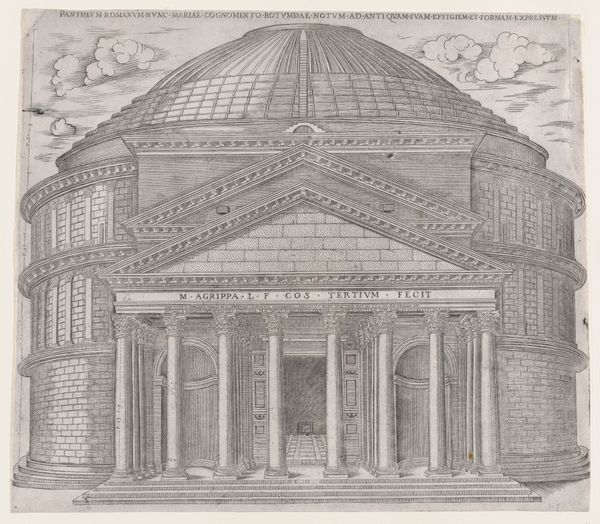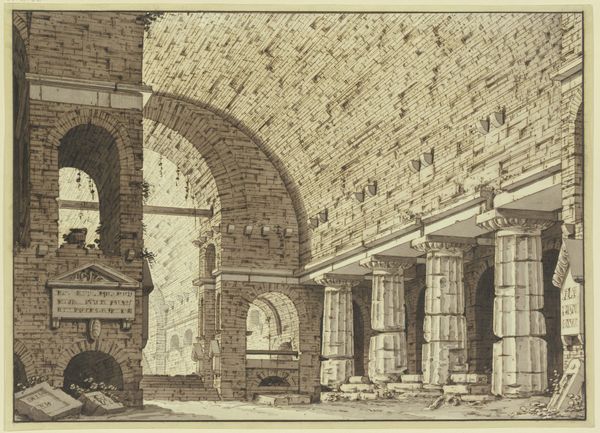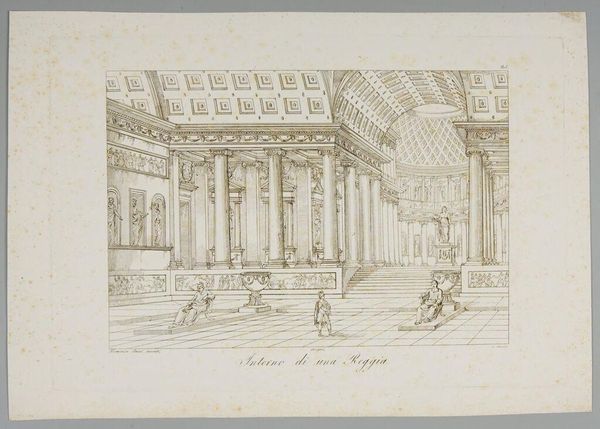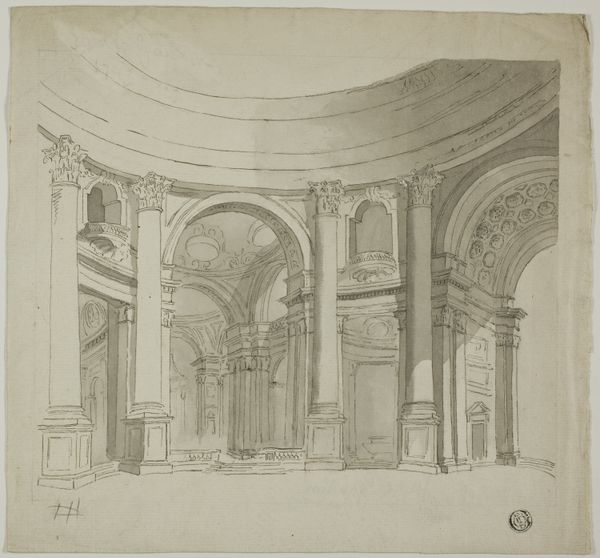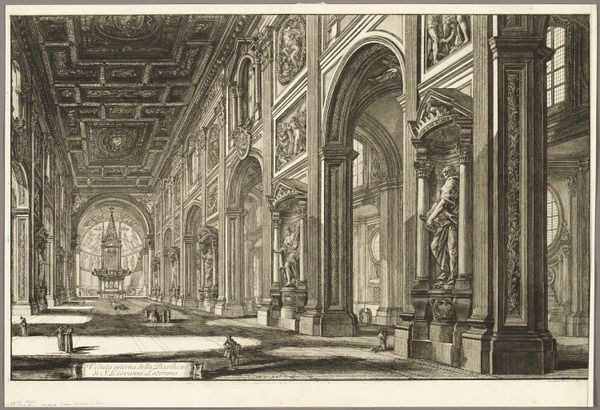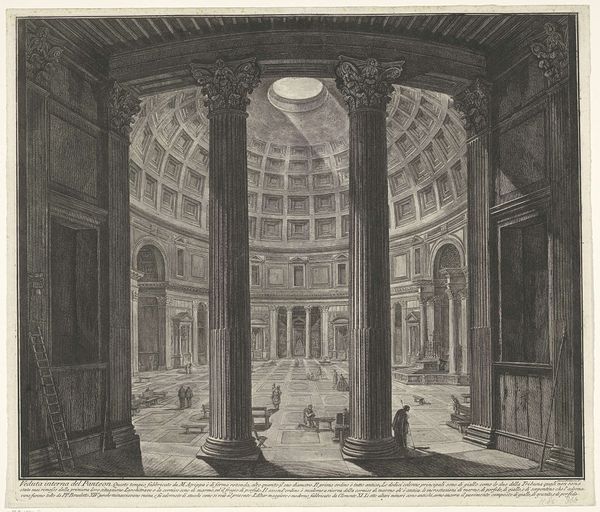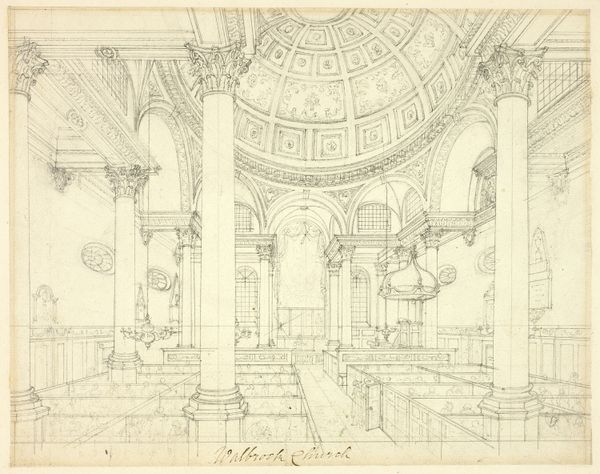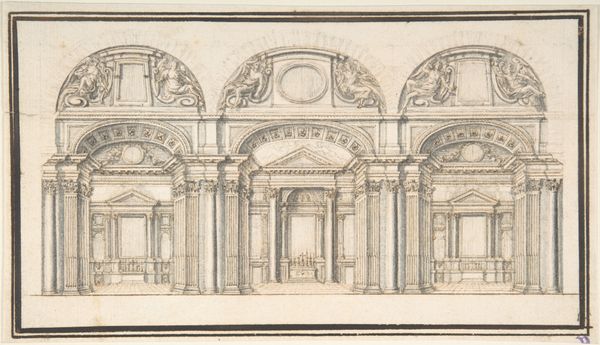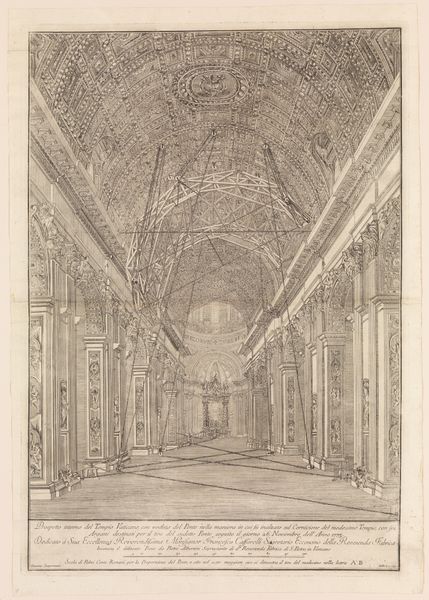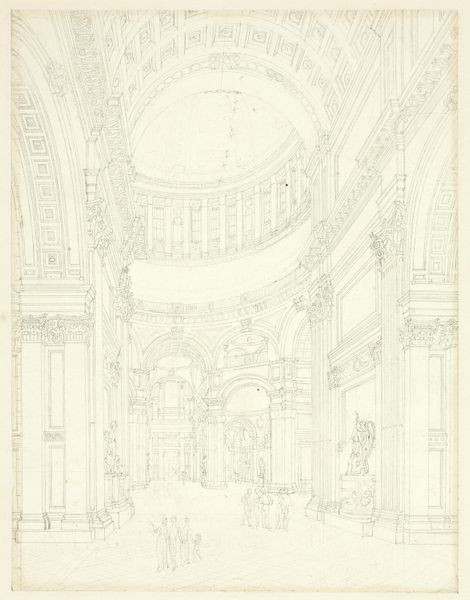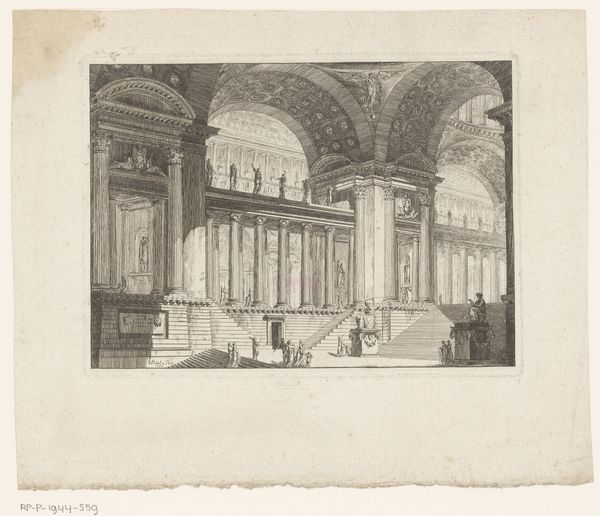
drawing, pencil, architecture
#
architectural sketch
#
drawing
#
neoclacissism
#
aged paper
#
toned paper
#
light pencil work
#
pen sketch
#
pencil sketch
#
sketch book
#
landscape
#
form
#
personal sketchbook
#
geometric
#
classicism
#
pen-ink sketch
#
pencil
#
line
#
pen work
#
architecture
Dimensions: height 190 mm, width 245 mm
Copyright: Rijks Museum: Open Domain
Editor: We’re looking at “Villa Albani te Rome,” a pencil drawing by Hubert Robert, created sometime between 1754 and 1808. The scene depicts the interior of a grand, classical building. I’m immediately struck by the intricate detail, yet it also feels quite dreamlike. What do you see in this piece? Curator: For me, this drawing vibrates with the power of symbols. Robert isn't just showing us a building, he’s invoking the spirit of Roman classicism. Notice the careful rendering of the coffered dome and the Doric columns. What feelings do these forms conjure? Editor: Definitely a sense of order and permanence, I guess. The light is cool. Curator: Precisely! Neoclassicism was obsessed with recovering an idealized past. Look how the architectural elements, and even the sculptures within niches, reference ancient ideals. It embodies values – reason, balance, civic virtue – but how does Robert subtly challenge pure reverence? Editor: The sketchiness of the drawing style, perhaps? It feels less about perfection and more about a fleeting impression. Also the little people, the almost appear as if the building has been deserted. Curator: Good eye. Robert often juxtaposed grand architectural visions with signs of decay, ruins being overgrown. These human figures seem almost insignificant amidst such monumental architecture. The light seems to emanate both hope and resignation. What do you suppose he wants us to feel? Editor: Maybe the drawing explores both the allure and the potential ephemerality of classical ideals? The building is magnificent but the loose lines might suggest the passing of time, change. Curator: That's insightful. Through these careful juxtapositions of light, architectural symbolism, and scale, the artist encourages viewers to engage with history in a profound and introspective way, inviting dialogue between then and now, presence and absence. Editor: This has given me so much to think about; seeing the architecture as more than just stone, but as a vessel for ideas is fascinating. Thanks.
Comments
No comments
Be the first to comment and join the conversation on the ultimate creative platform.
